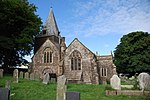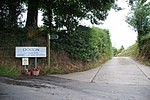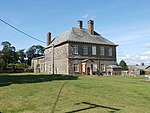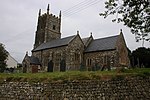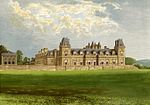Potheridge (alias Great Potheridge, Poderigge, Poderidge or Powdrich) is a former Domesday Book estate in the parish of Merton, in the historic hundred of Shebbear, 3 miles south-east of Great Torrington, Devon, England. It is the site of a former grand mansion house re-built by George Monck, 1st Duke of Albemarle (1608–1670) circa 1660 on the site of the former manor house occupied by his family since at the latest 1287. It was mostly demolished in 1734 after the death of the widow of his son Christopher Monck, 2nd Duke of Albemarle (died 1688).
The surviving section forms the present Great Potheridge farmhouse, a Grade I listed building, inside which some remnants of the former mansion remain, including a grand staircase, two massive 17th-century classical-style doorcases and a colossal relief-sculpted wooden overmantel. The latter depicts within a wreath of flowers, against a background of an elaborate antique trophy of arms, five putti, two of which, in flight, hold between them a crown, an allusion to Monck's central role in the Restoration of the Monarchy. The chapel "of Grecian architecture", i.e. classical, was in ruins in 1770 and was almost entirely demolished before 1822, with only the west wall left standing. In 1879, the stables were still standing and were said to "give the visitor some idea of the magnificence of the ancient building".In 2014 Great Potheridge, with 6 acres of land remaining of the former estate, is used as an outdoor activity centre for young people, operated by Encompass Training. It is today known as "Great Potheridge" to distinguish it from the nearby house, formerly on the estate, known as "Little Potheridge".

